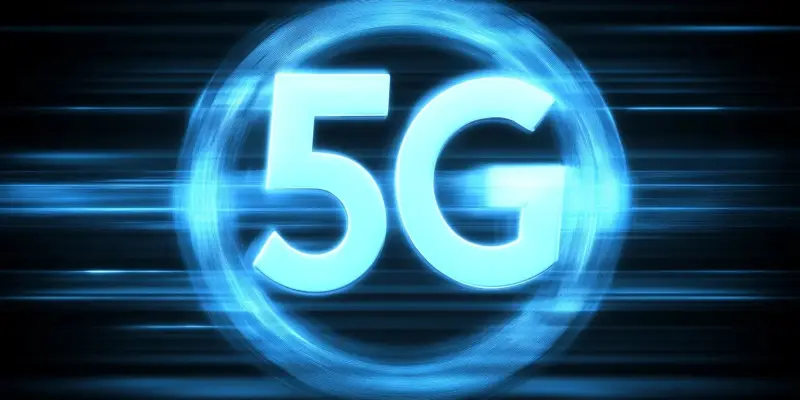The recent benchmark report by MedUX has shed light on the performance of 5G mobile networks across 15 major European cities. The report uncovers some impressive high performers like Porto and Stockholm, yet identifies others, particularly Brussels and London, that lag behind in meeting the EU Digital Decade Objectives. The analysis not only emphasizes existing challenges but also underscores the necessity of policy and investment changes in the European telecom sector.
Leading Performers in 5G Quality
Porto has emerged as the leader in the overall quality of experience (QoE), demonstrating remarkable performance in data services and over-the-top (OTT) services. This Portuguese city excels with the lowest gaming average jitter of just 10 milliseconds, superior cloud service performance, and peak data transfer speeds that surpass 800 Mbps in the fastest sessions. Porto, alongside Lisbon, has been commended for offering the best value for speed and ensuring robust connectivity with a 100% connection reliability on the 5G mid-band n78. Furthermore, Porto shares the top spot with Copenhagen in 5G availability, achieving an 86.54% registration rate.
Stockholm, tying with Porto for the highest overall QoE score of 4.78 out of 5, stands out for its outstanding video streaming and social media experiences. The Swedish city boasts a 95% rate of 4K video playback and remarkable upload speeds that exceed a median of 116 Mbps. These impressive metrics position Stockholm as a co-leader in both overall QoE and 5G-only QoE. Additionally, the city has demonstrated excellence in web page load times, web browsing, and file transfers, setting a high standard for other European cities to follow.
Lisbon’s Strong Performance
Lisbon has secured third place in the overall QoE rankings, earning recognition as the most reliable service provider with a 99.63% success rate in internet sessions. This impressive reliability ensures that users in Lisbon experience a consistently high-quality connection, which is especially crucial for data-intensive applications. The city’s performance is further bolstered by the quickest 5G download speeds, peaking at an impressive 1.9 Gbps. Lisbon shares top honors with Porto in value for speed and social media experiences, highlighting its position as a leader in delivering efficient and fast 5G services.
In terms of 5G availability, Copenhagen leads the way with an 86.99% technology registration rate, a testament to its widespread 5G service access. This high registration rate ensures that users in Copenhagen consistently have access to 5G networks, enhancing the overall user experience. The city’s leadership in 5G availability showcases its commitment to providing reliable and high-speed connectivity to its residents, aligning well with the broader goals of the EU Digital Decade Objectives.
Struggles in Brussels and London
Conversely, Brussels has shown significant deficiencies in its 5G network, lagging in overall QoE due to reduced 5G availability and slower speeds. The Belgian capital must address these issues to improve its overall reliability and streaming services, ensuring it can match up to the leading cities in the region. Limited availability and inadequate performance have placed Brussels behind in the race to meet the EU’s ambitious 5G goals, highlighting a pressing need for targeted enhancements in network infrastructure and service delivery.
London continues to face significant challenges, repeating findings from the previous year and ranking last in overall mobile experience. The UK capital struggles with poor 5G availability, slow speeds, and a need for enhancements across multiple services and overall reliability. These persistent issues have led to widespread user dissatisfaction, underscoring the urgent need for significant improvements. The findings illustrate the critical nature of overcoming these hurdles to ensure that London can keep pace with other major European cities in the 5G era.
The Need for a Holistic Approach
Rafael González, MedUX’s senior vice-president of EMEA, emphasizes the importance of adopting a holistic approach to 5G quality. According to González, it is crucial to not only focus on coverage and speed but also to ensure consistent performance across all services and applications. The findings from the MedUX report reveal that end-users in major European cities are connected to 4G for 25% of their time, and 10% of the remaining 75% of 5G connections lack mid-band spectrum. This gap significantly hinders the transformative potential of 5G, indicating a considerable need for improvements in network infrastructure and comprehensive service delivery.
The results from the study suggest an urgent necessity for policy and investment changes toward high-quality 5G deployments. Enhancing user experience and reliability is essential for Europe to achieve universal 5G coverage across all urban areas by 2025. Such improvements are critical for Europe to fully realize the myriad benefits of 5G technology, fostering innovation and economic growth while ensuring robust connectivity for all citizens.
Calls for Improvement
A recent benchmark report by MedUX has revealed the performance of 5G mobile networks in 15 major European cities. The findings highlight standout cities like Porto and Stockholm for their exemplary 5G network efficiency. However, the report also identifies cities such as Brussels and London as falling short in achieving the EU Digital Decade Objectives for 5G connectivity. This analysis not only shines a spotlight on the current challenges within the 5G implementation across Europe, but also stresses the need for significant policy adjustments and increased investments in the European telecom sector to bridge these gaps. MedUX’s report serves as a crucial wake-up call for policymakers and stakeholders to act promptly and ensure that all European cities can meet and exceed the projected standards for digital connectivity in the coming years.

